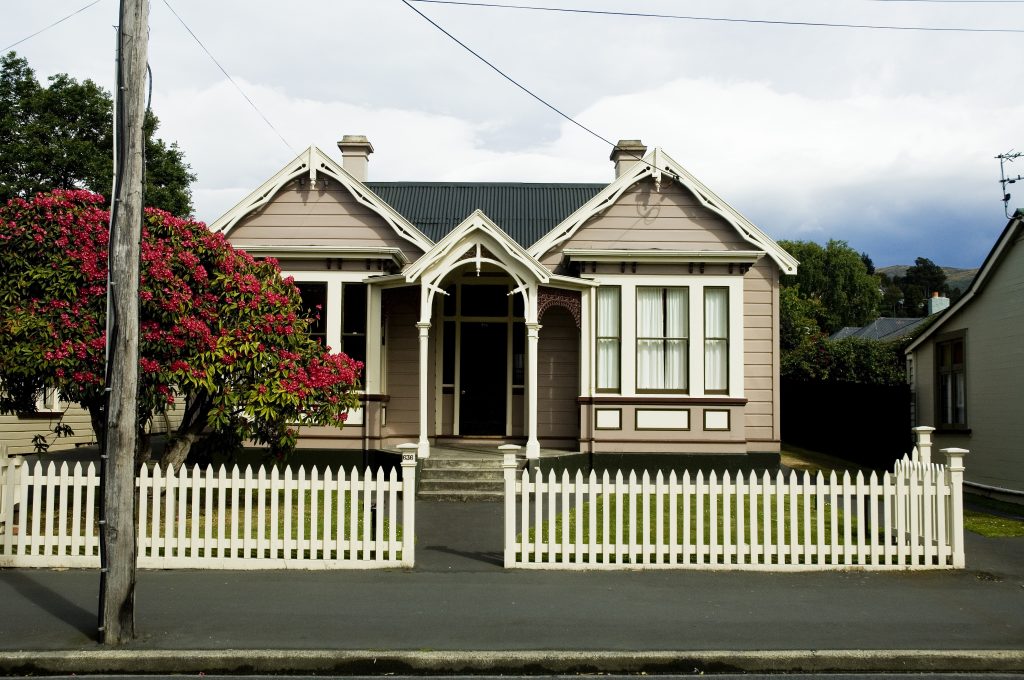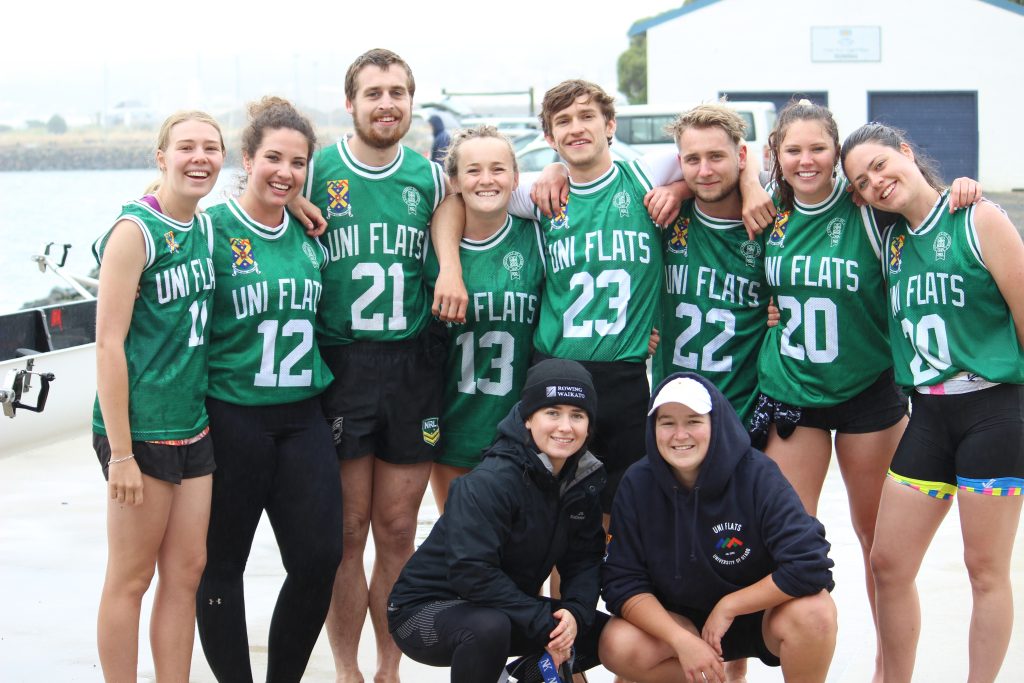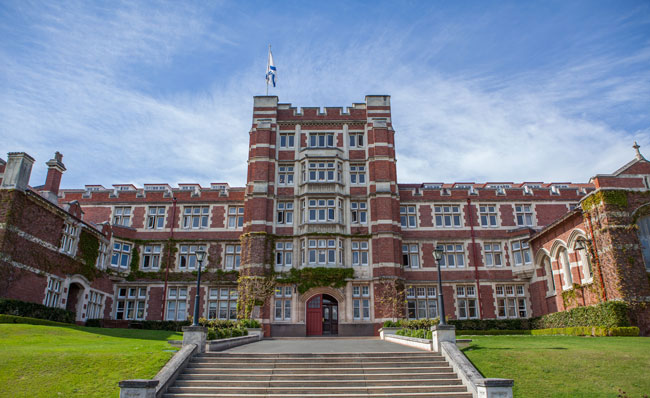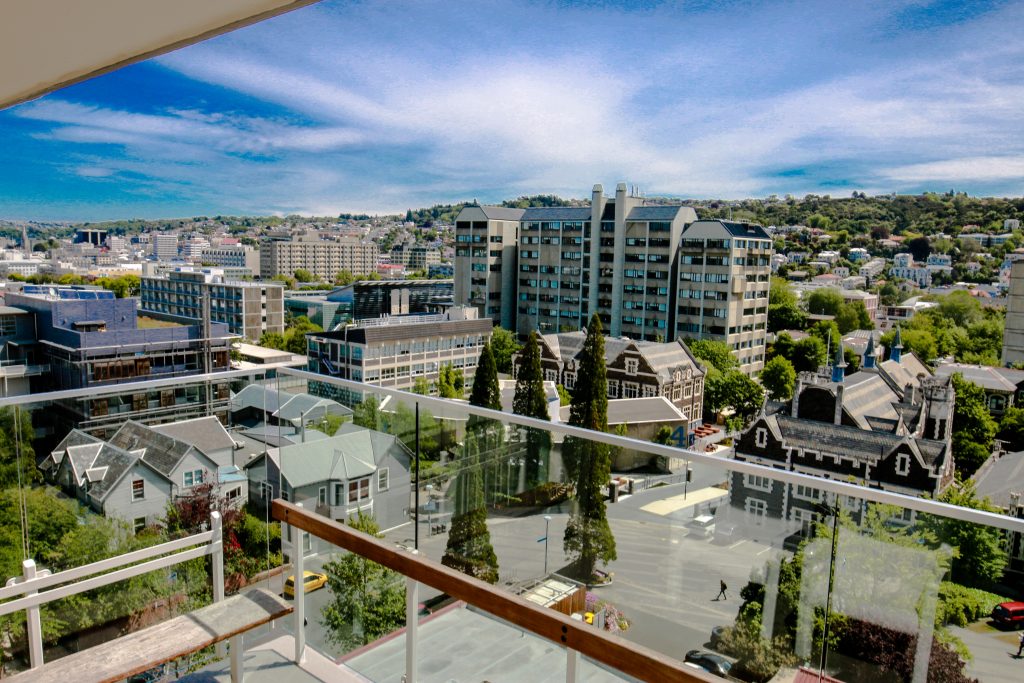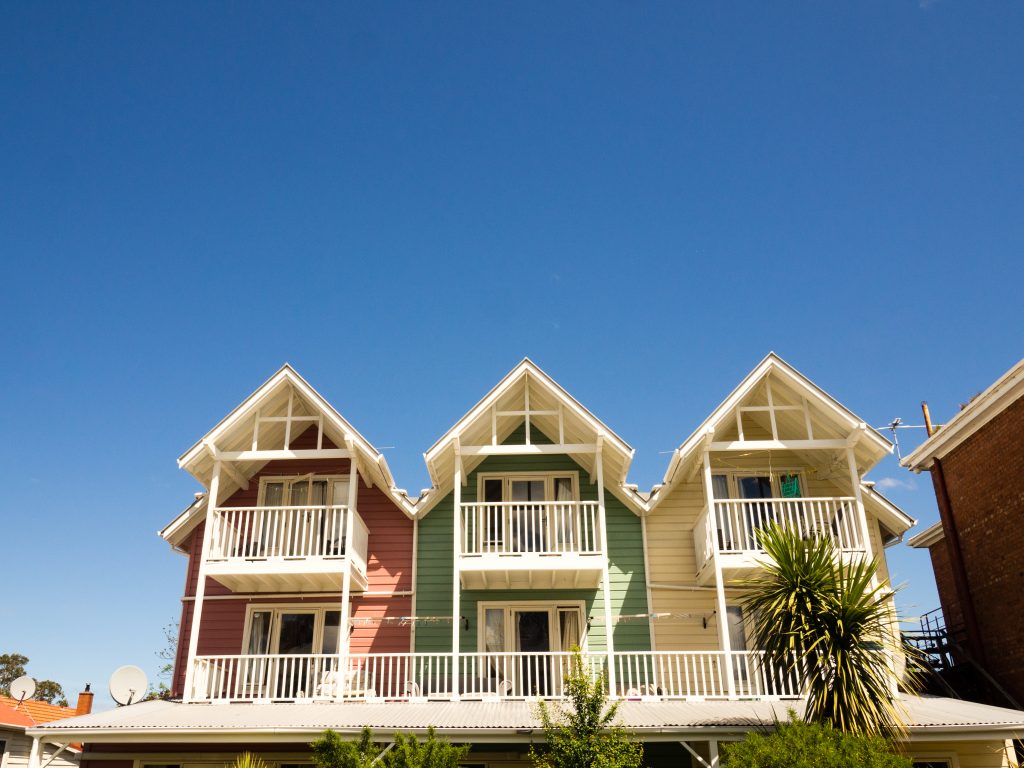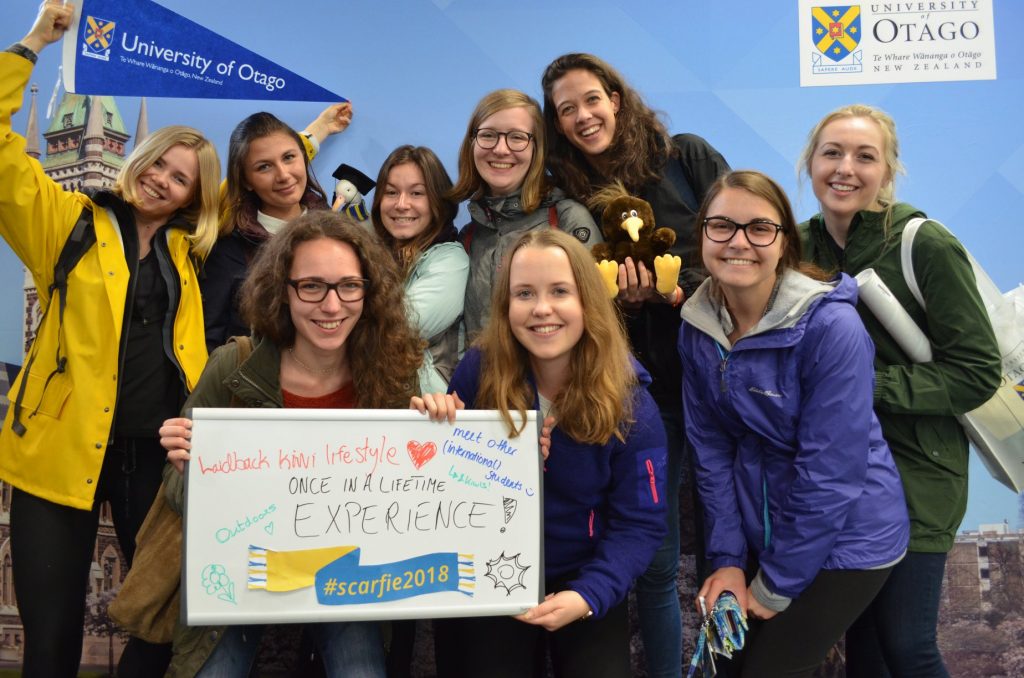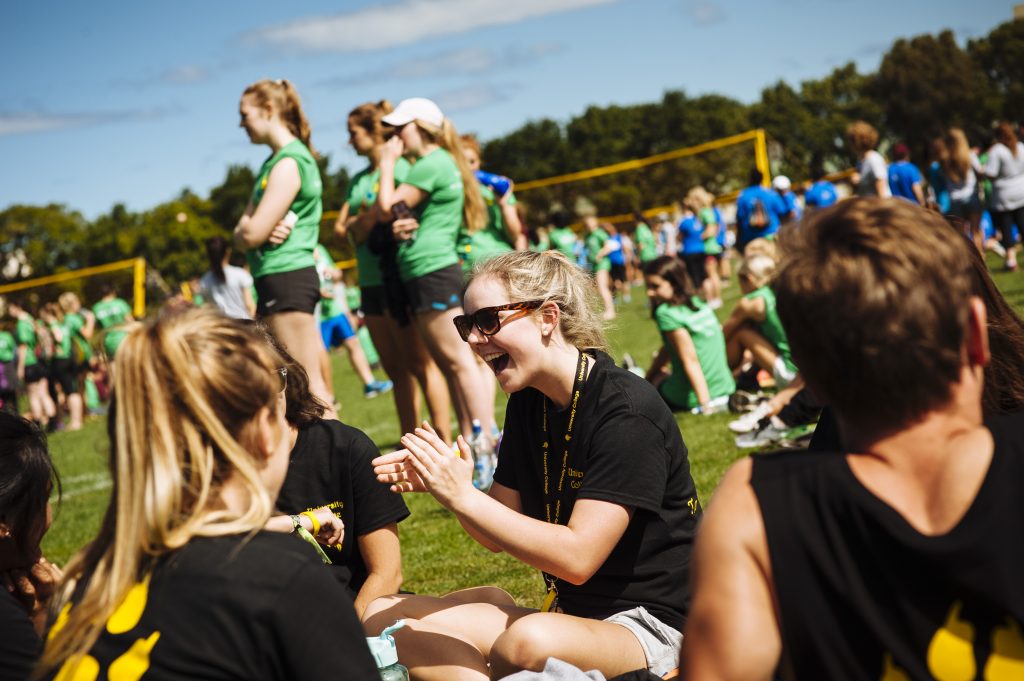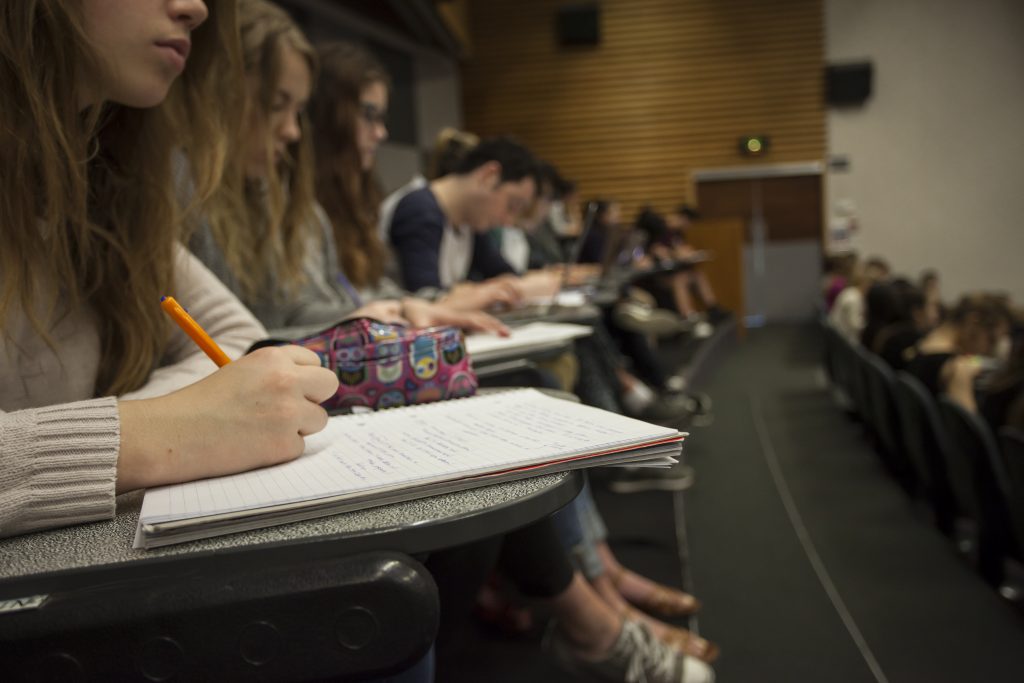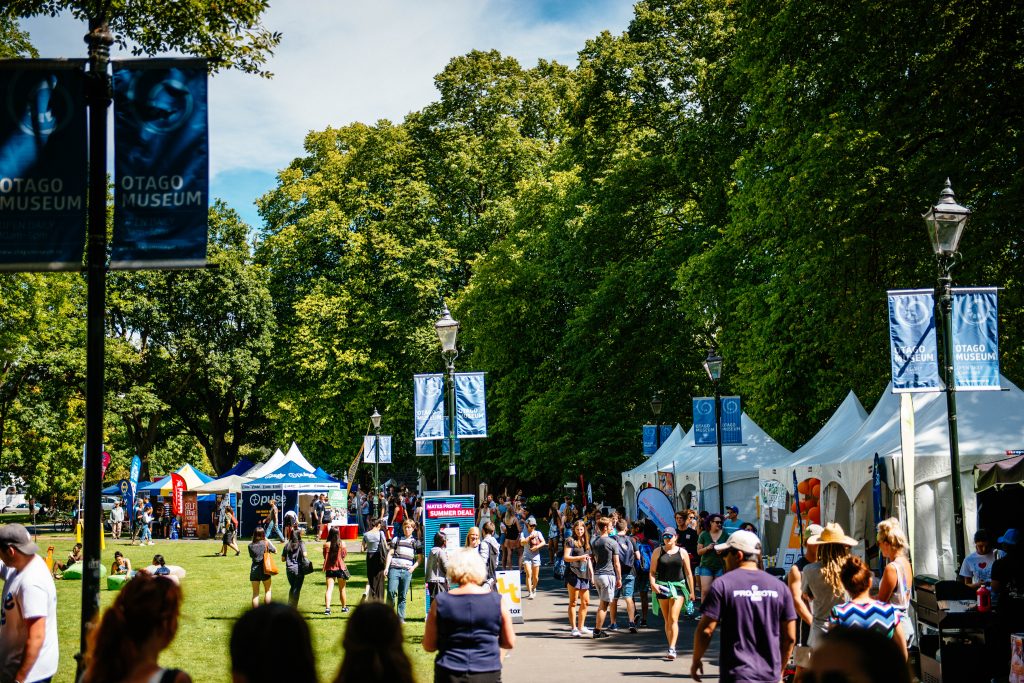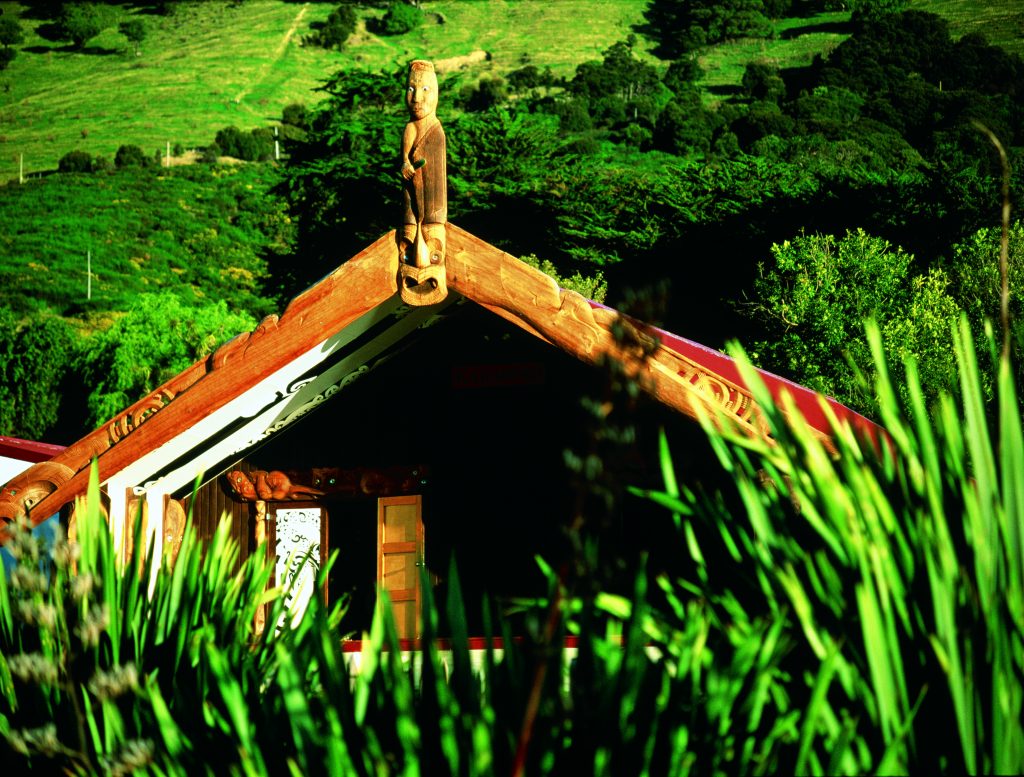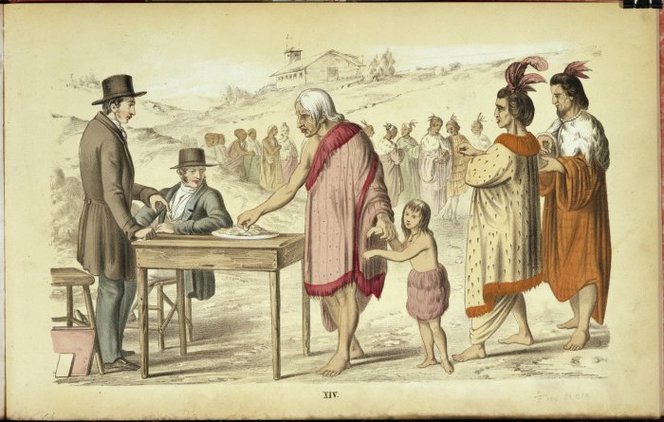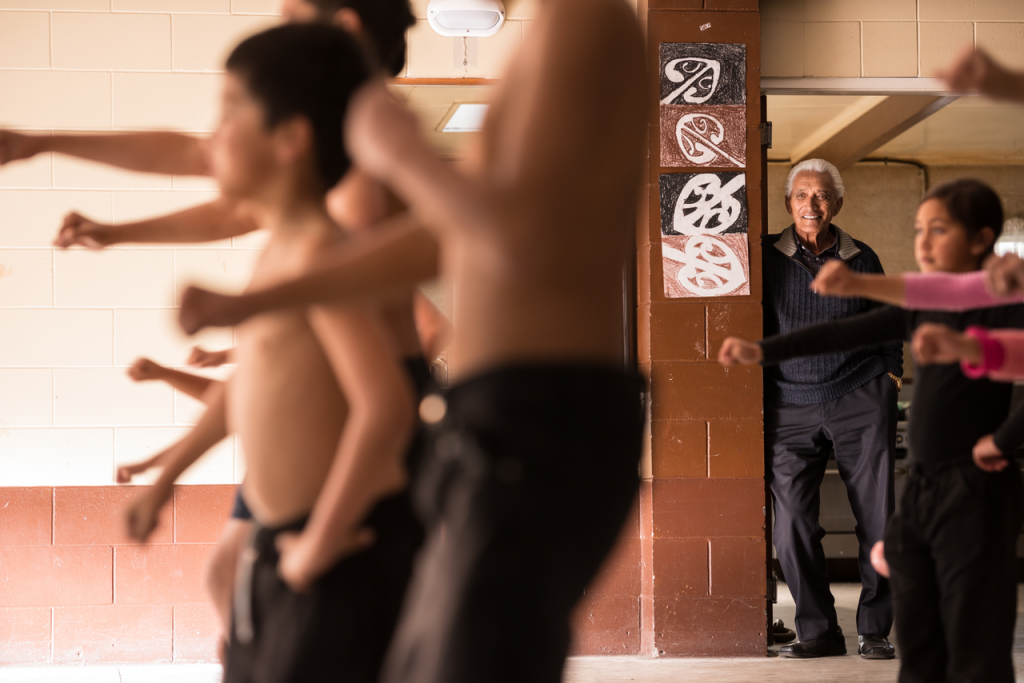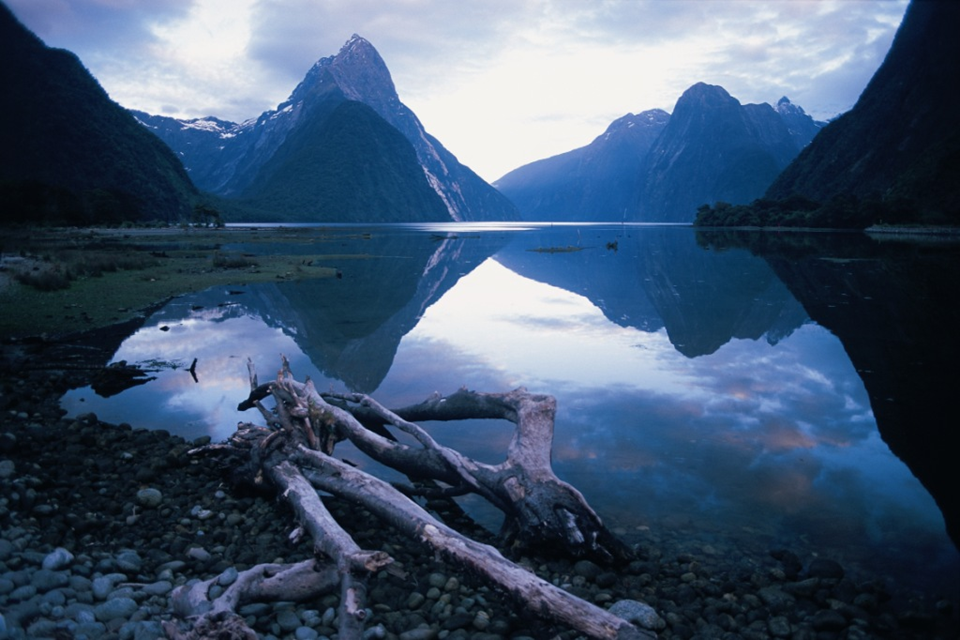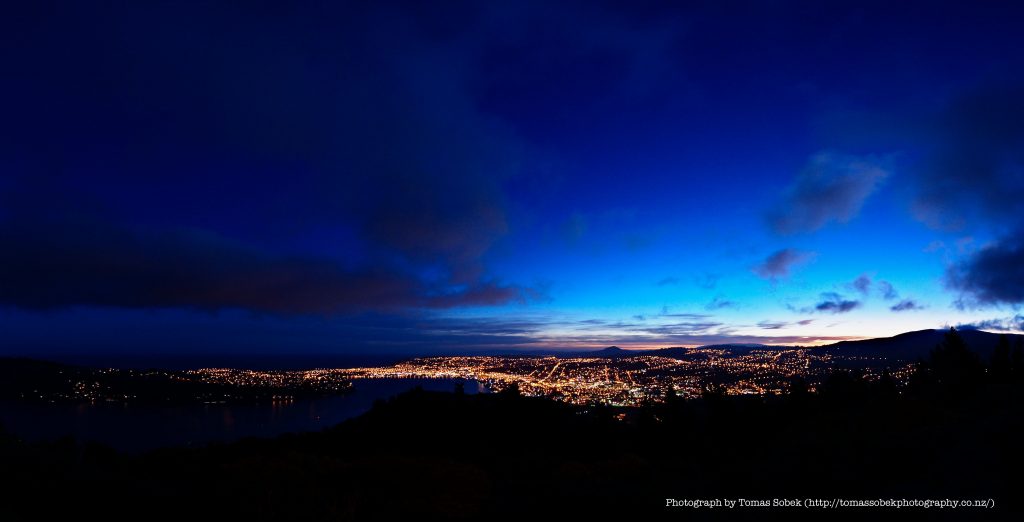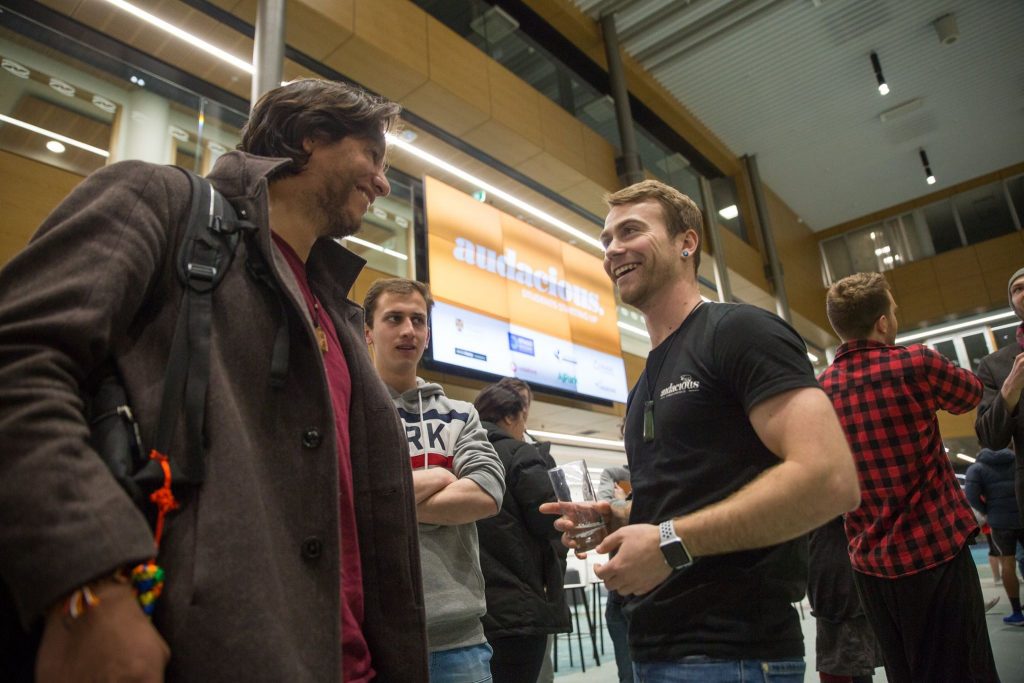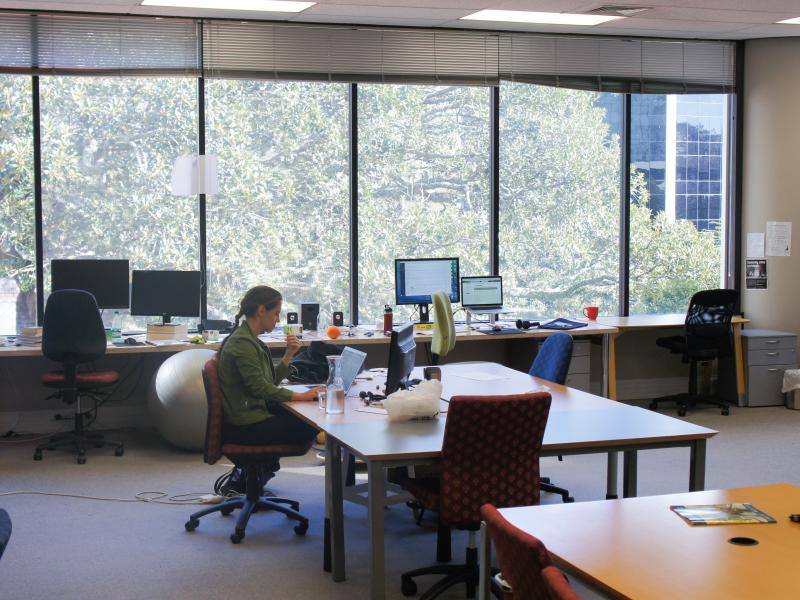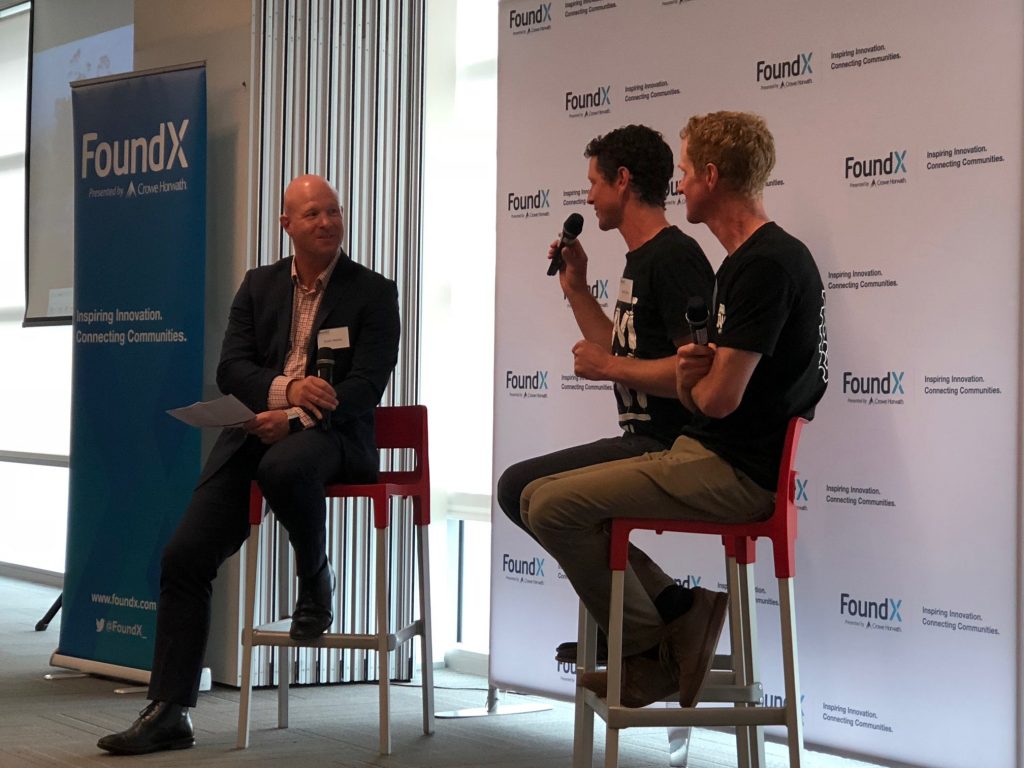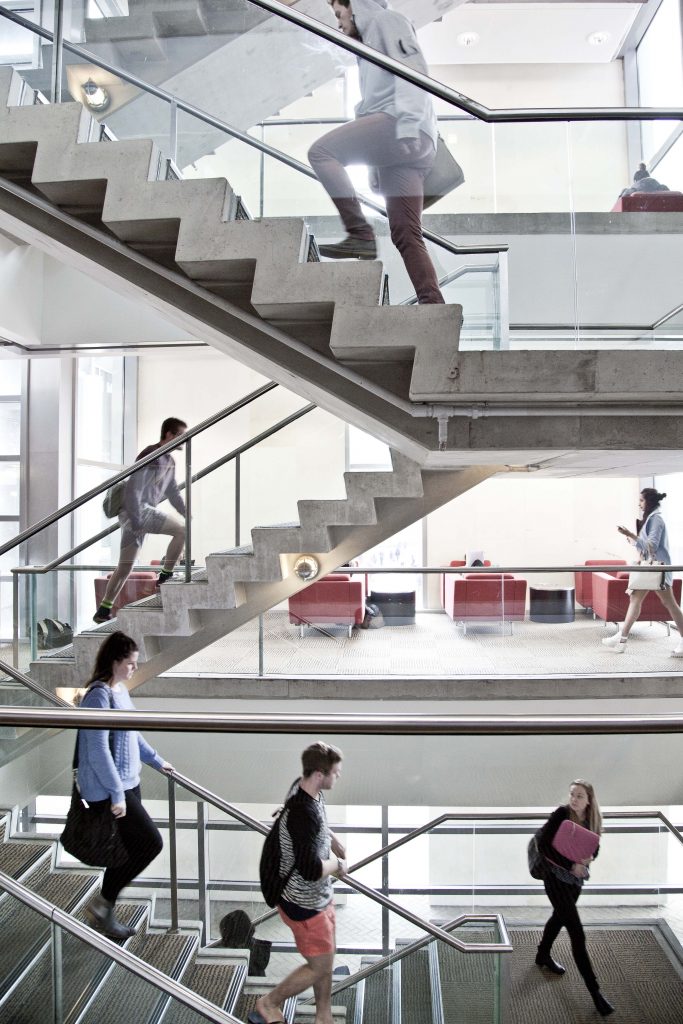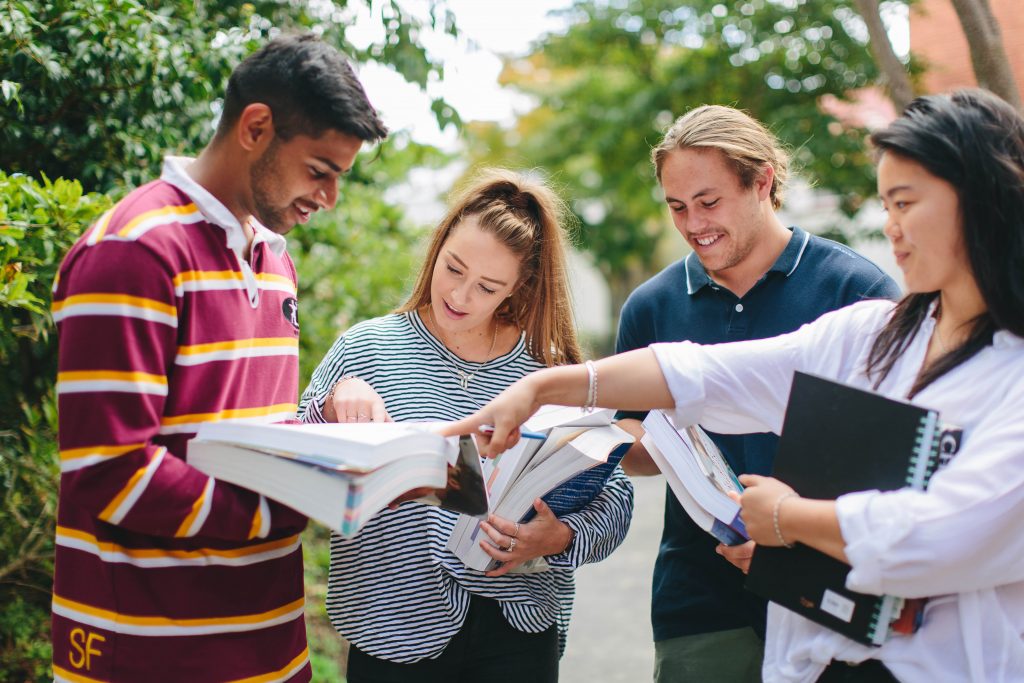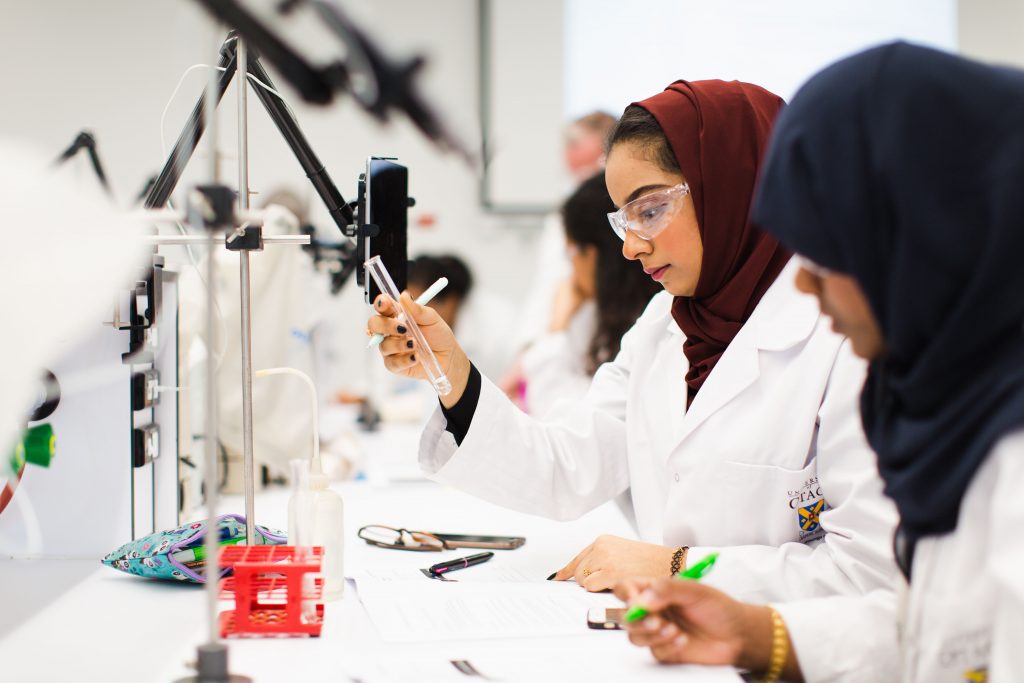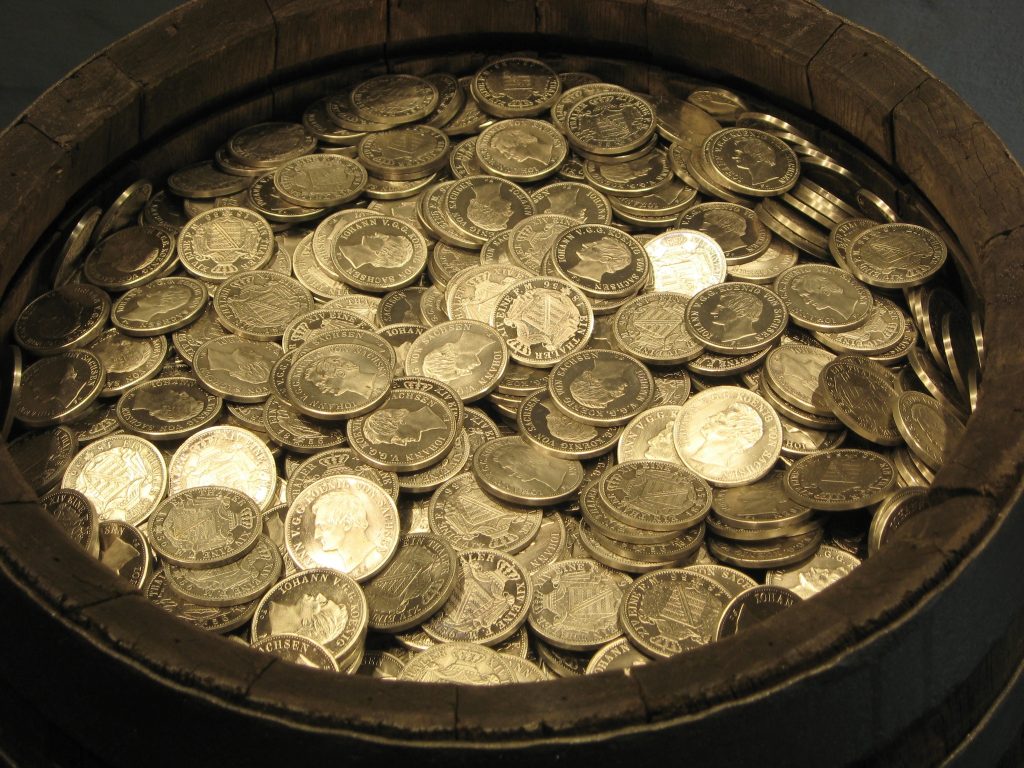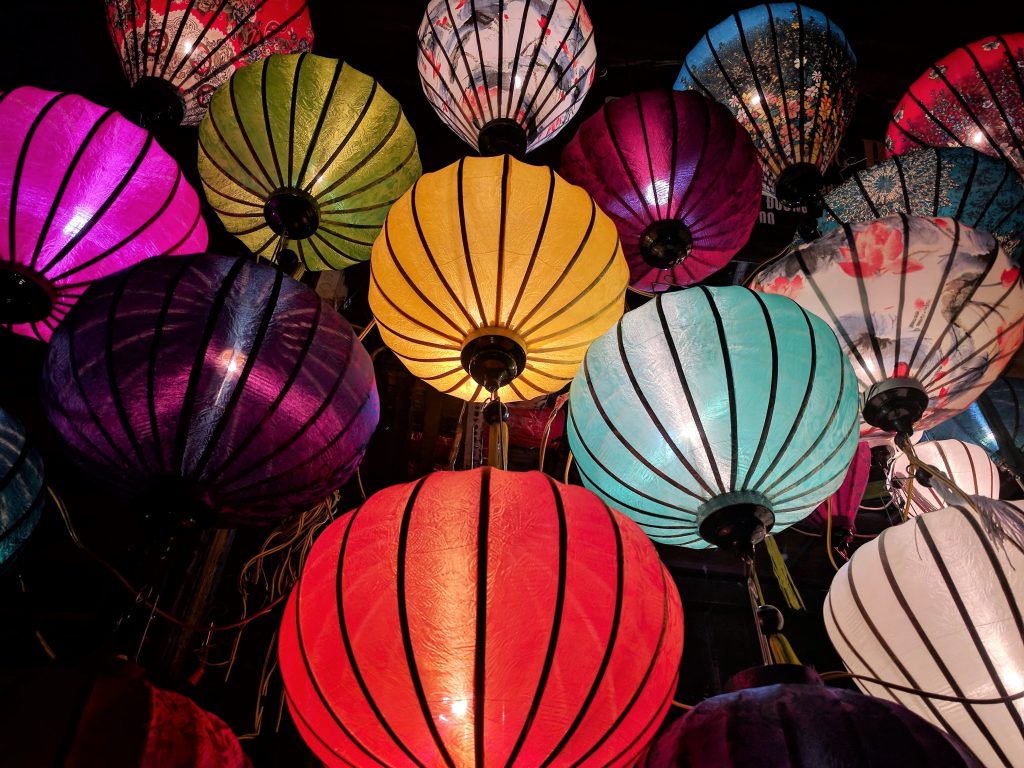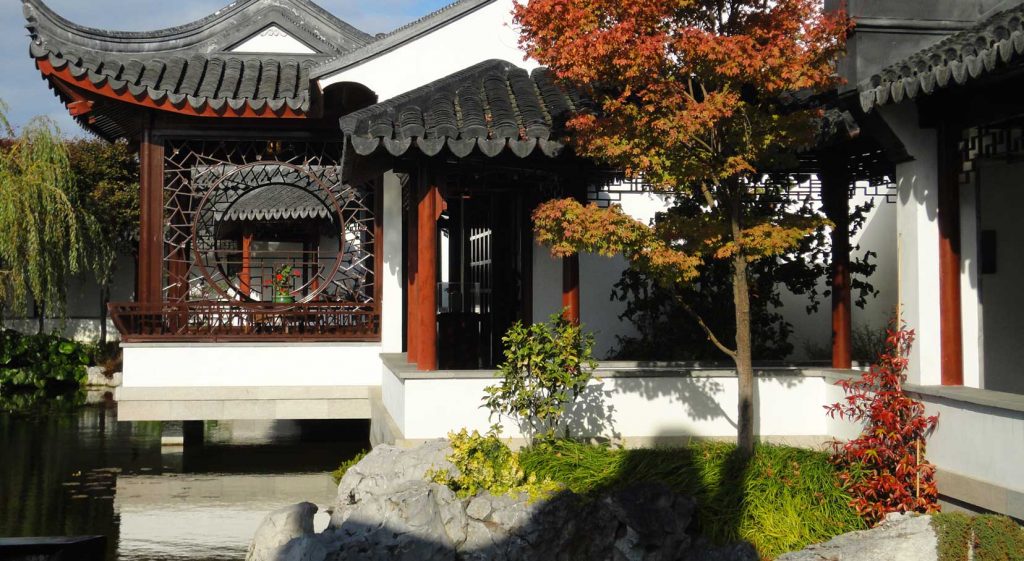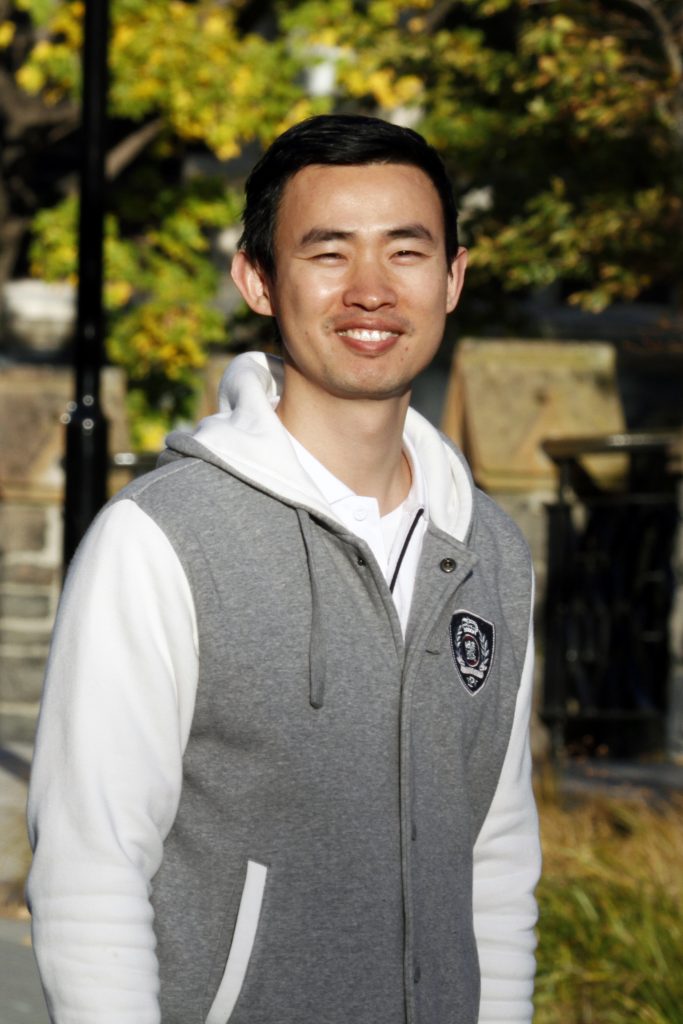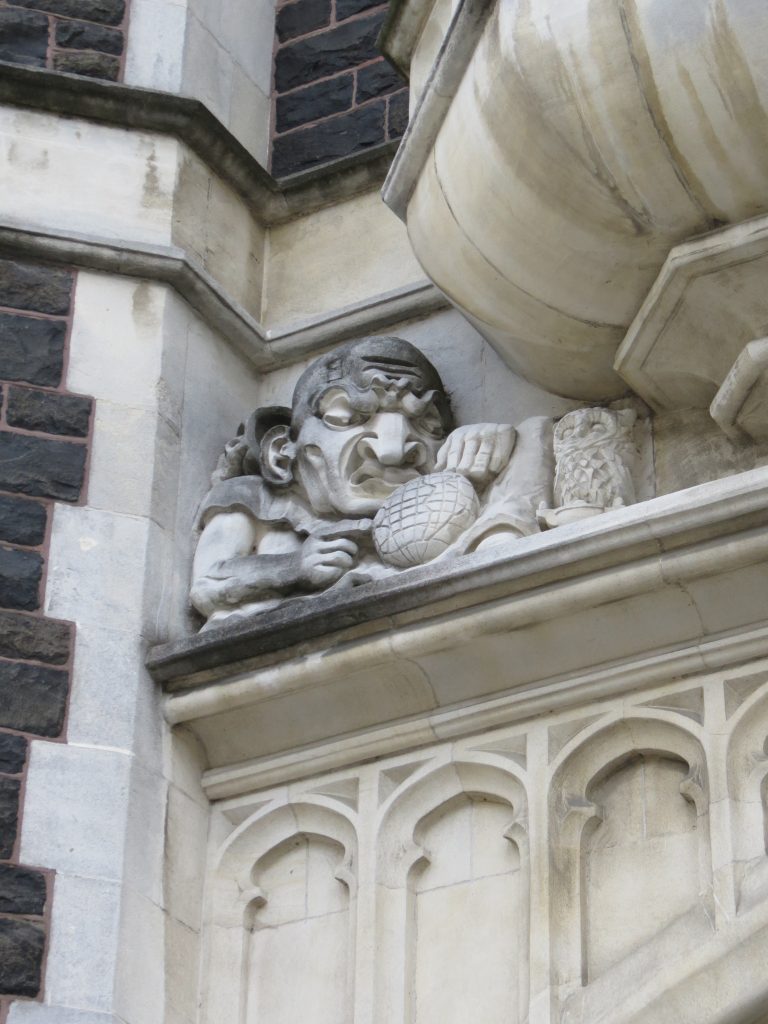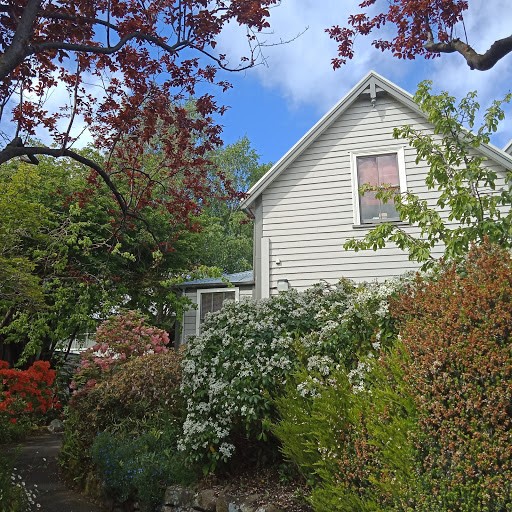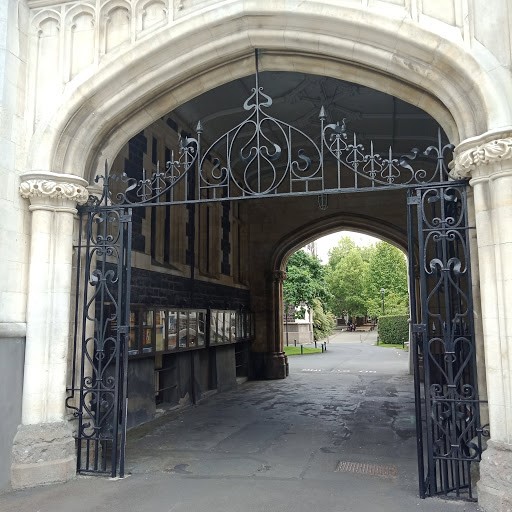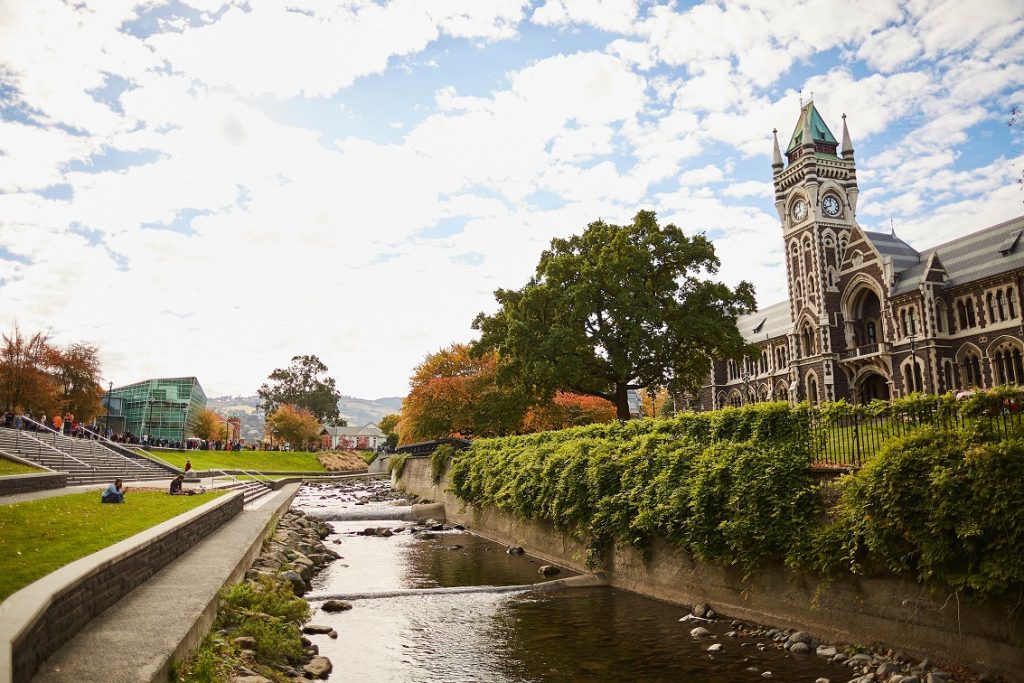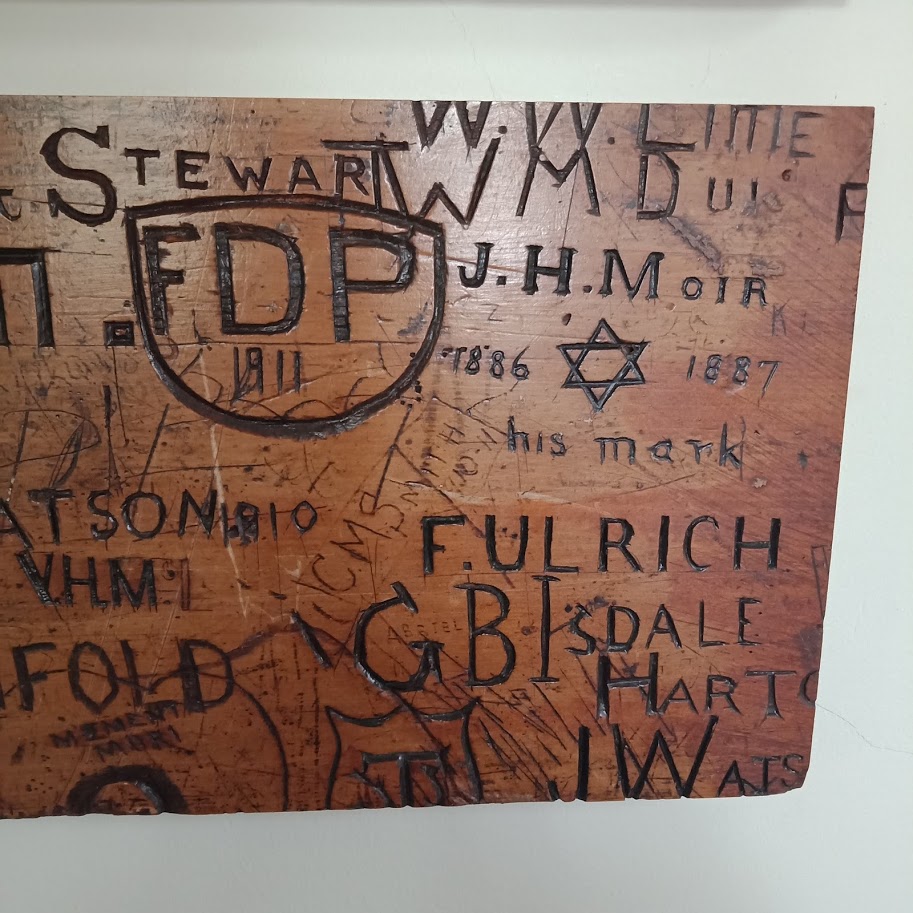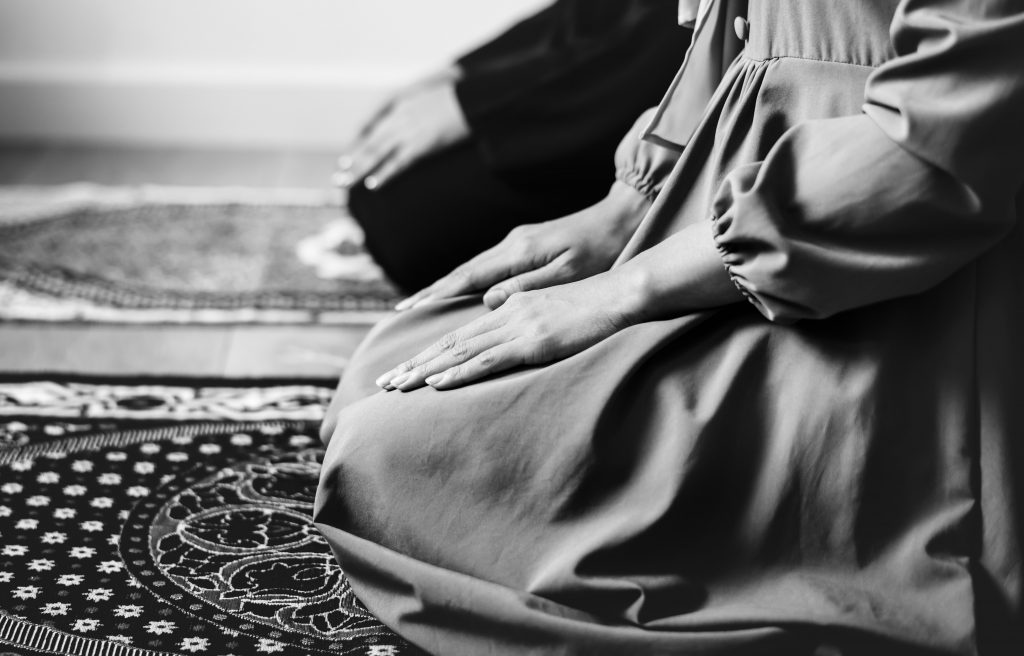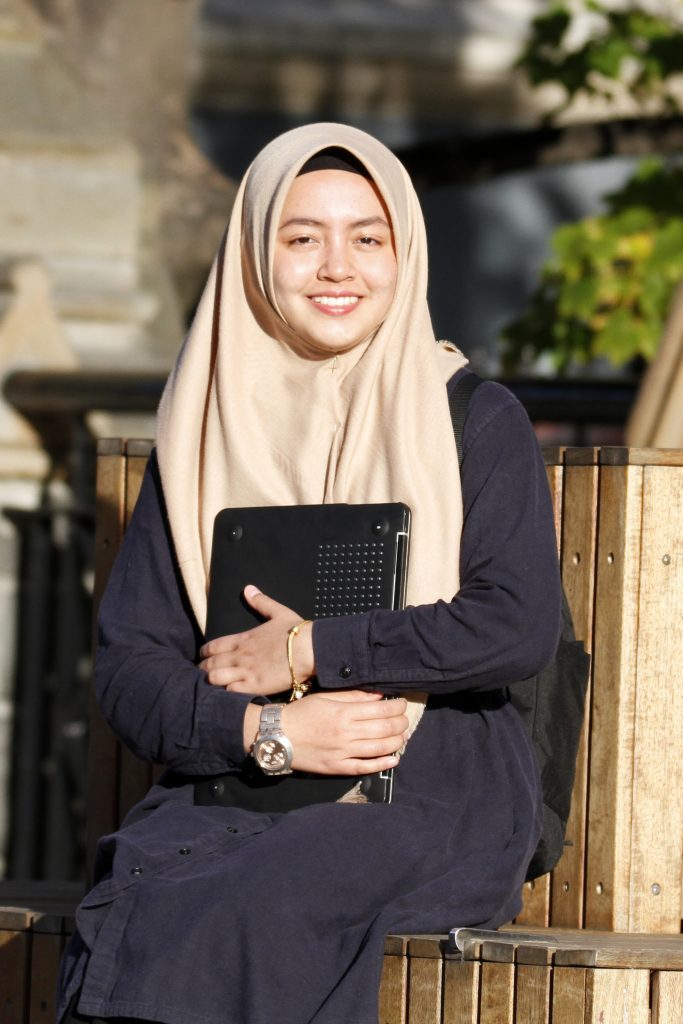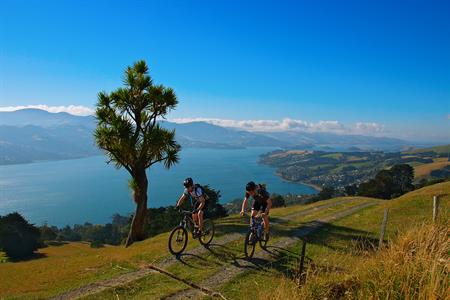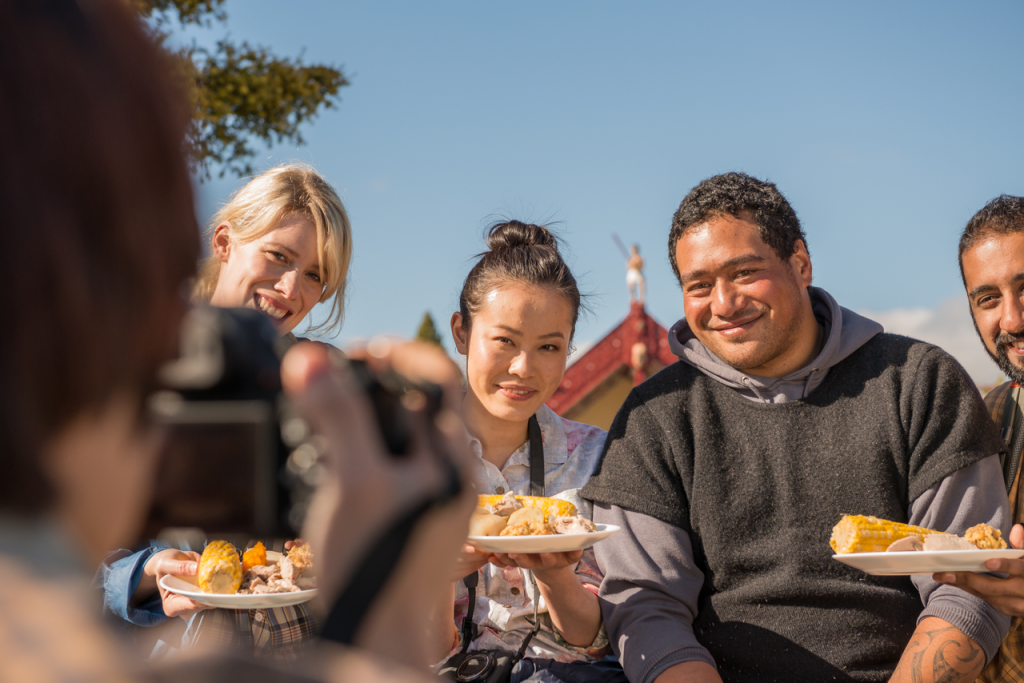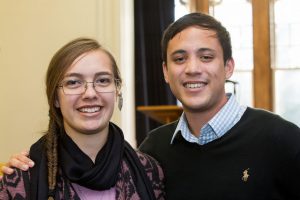Accommodation at Otago – where will I stay?
So, you’re thinking of being brave, adventurous and independent and leaving your home country to come and study at the University of Otago? We love to see all the new and returning faces of our international students, and we also like to think that we can answer a few of the many questions you may have before you get on board that plane and take a leap of faith to come to our beautiful little corner of the world. So today’s blog focuses on where you will live when you come here, we’ve got a few options to offer accommodation wise – it all depends on what kind of living experience you are looking for, so here we go!
University Flats (Uni Flats)
Uni Flats is probably our most popular option for international students. Before I go any further I think a little translation of kiwi is necessary, a flat in New Zealand is actually accommodation, often a house like the one pictured above, which is shared with others. These flats are very close to campus so you will be right in the heart of student life. Each flatmate has their own bedroom with kitchen, bathroom, laundry and living areas as shared spaces. So you’re living pretty independently, but you’re not alone.
Any full time international student who is coming to Otago for one or two semesters can apply to live in a Uni Flat. Up to six international students live in a co-ed flat, accompanied by one or two kiwi hosts. A kiwi host is a New Zealand student, who will help you settle in to your new environment and this is one of the best ways to assimilate into a culture – by hanging out with the locals! These flats are extremely popular and are managed by the University, are autonomous but offer a supportive and pastoral care service, have plenty of recreational and social activities – so if you’re thinking of coming to Otago, make sure you apply as soon as possible.
Residential Colleges
If you like the idea of having your breakfast, lunch and dinner prepared for you (sounds good to me), and enjoy meeting and living with lots of people, perhaps one of our residential colleges is what you need? We have 15 residential colleges at Otago that accommodate 3,500 students and plans are afoot to build more! There are so many different options, if you like the idea of a traditional, historic and architecturally impressive college, look no further than the castle like Knox College (pictured above) or Selwyn College.
Or if you want to be right in the heart of campus St Margaret’s College is one to note, or take a look at the view from Unicol (University College) in the photo above – Unicol is our largest and possibly liveliest college. We also understand that post-graduate students may also like the care provided by a college, but aren’t quite as interested in the social aspect so we have a designated post-graduate college – Abbey College.
Private, Short Term or Temporary Accommodation
If for whatever reason you’re not interested in flatting, or living in a college, or you’re just wanting to find private accommodation, or accommodation for a short time or you have any queries our international accommodation adviser from the University of Otago Accommodation Centre can offer advice – international.accommodation@otago.ac.nz.
Dunedin flats in general require a particular mention here, recently Sarah Gallagher, of the Dunedin Flat Names Project, and Dr Ian Chapman, Senior Lecturer in Performing Arts at the University of Otago, have collaborated together to create a visually appealing and witty book entitled ‘Scarfie Flats of Dunedin’ featuring a selection of well known and lesser known named flats – yes, students have named their flats.
And remember If past domestic and international student’s testimonials are anything to go by, the time you spend at Otago, outside of classes and laboratories will no doubt lead you to new experiences, opportunities, friendships and memories that will stay with you for your lifetime. Many alumni lament and say……oh, those were the days……take me back to Otago……!
Nicky Richardson is an International Marketing Coordinator at the University of Otago. With degrees in music and marketing, she is a recent graduate of Otago herself – she loves Otago so much she ended up getting a job here!
Orientation at Otago – a snapshot!
Whether you are a new or returning student one thing you all have in common is the chance to be involved in the celebrations, events and information sessions that make up the University of Otago Orientation Week! From attending the Convocation Ceremony – the official and formal welcome to all first year students, to making the most of the star-studded line up of performances, there are plenty of opportunities for you to immerse yourself into the Otago culture and surroundings and along the way meet some like minded people.
Student Village and Tent City
This year we are running a Student Village on campus alongside Tent City in the Museum Reserve from Monday the 17th February through until Wednesday the 19th.
Find out about all the services, support and other opportunities offered by the University including:
- Campus Watch
- Career Development Centre
- Chaplains
- Disability Information and Support
- International Office
- Locals Programme
- Māori Centre
- OUSA Student Support Centre
- Pacific Islands Centre
- Student Health
- Student Learning Development
- Te Where Tāwharau
- Unipol and Recreation Services
- Social Impact Studio – change you, change your world
Staff from StudyLink will also be in attendance.
University Collegiate Sports Day
During orientation week first-year students from residential colleges, Uni Flats, and the Locals programme meet en masse in a collegiate sports day, complete with chants, flags and uniform t-shirts, to participate in a fun-filled afternoon of social sport.
This is the chance to cement newly formed friendships and get involved in some healthy competition. Sports include touch, netball, soccer and volleyball.
Need some tips on how to succeed at Otago?
Along with course advice available throughout the week, there are also other information sessions aimed at helping you understand what university academic standards and expectations are, and how you can succeed! Including sessions on how to transition into university successfully, points for international students on how to succeed academically at Otago, and if you are an international student don’t miss our official welcome and lunch, on Wednesday the 19th February, the food and the kapa-haka performance are always a hit! Plus we are always on the look out for student stories and if you’re interested in sharing your story, being an ambassador for Otago, or featuring on the cover of one of our international publications, come and see the International Office booth at the expo and talk to us!
OUSA Clubs Day
OUSA has a crazy amount of opportunites for you to try something new, meet new people or perhaps get together with students who have also come here to study from your home country. With over 160 affiliated clubs and societies on campus you really can’t complain about a lack of options. Head to Clubs Day on Thursday 20th February to find your fit!
Looking to be entertained?
If you’re looking for pure adrenaline, big crowds and fun, there are a variety of events to choose from, including performances from big name DJ’s and bands (the image above was taken at last year’s orientation) at the Forsyth Barr Stadium, NZ’s only covered stadium, and just a 5 minute walk from campus. And as the picture below shows you, yes, the famous Toga Party still lives on. And if you’re a lover of food, don’t miss the International Food Festival on Saturday the 22nd of February, a huge array of delectable delights from around the world are on offer for you to try.
So, what’s our advice to you? Get involved, try something new, literally be like a sponge and soak it all up. There are so many choices for recreation, new experiences, study advice and general help available to you, and we like to think we are a friendly bunch of people so always ask if you’re unsure! Enjoy this special time in your life, as the text in the photo at the top of the blog says it’s a “once in a lifetime experience.”
Nicky Richardson is an International Marketing Coordinator at the University of Otago.
Waitangi Day – a very brief history……
Since 1947, February the 6th has been known as ‘Waitangi Day’ a nationally recognised holiday in New Zealand – a day for relaxing, enjoying the warm summer sun, and a day off work for some. But what is this public holiday all about? What is Waitangi Day, and what is the history? Today’s blog gives a very, VERY brief and layman’s outline of the background to the Treaty of Waitangi and the subsequent years since it was signed. Many thanks to Mark Brunton from the Office of Māori Development for providing the background to this blog by way of professional development courses held at the University of Otago.
Maori – the indigenous people of New Zealand
Captain James Cook, the man attributed to discovering New Zealand in 1769 was not in fact the first person to discover New Zealand at all. Maori are the indigenous people of our land, who had their own functioning society and structures prior to European arrival, but for how long Maori people had been living and thriving in New Zealand is a matter of debate – current understanding is that the first arrivals came from East Polynesia in the late 13th century. It was not until 1642 that Europeans became aware the country existed, and in 1769 that Cook mapped an outline of New Zealand and word spread of the land of lush forests, seal colonies and a good location for more trading opportunities. 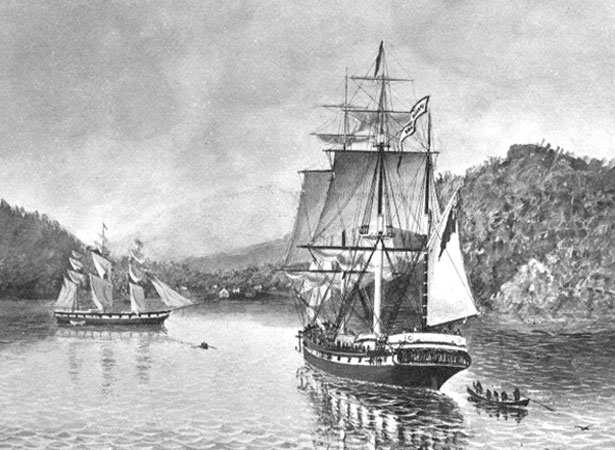
The arrival of the European settlers
Since Cook ‘discovered’ New Zealand word spread and over the next 70 years a rapid succession of European settlers descended upon New Zealand. First the Whalers and Sealers in the 1790’s – whose interaction with Maori was peaceful, where both parties developed alliances – they would trade goods, marriages between Maori and European were not uncommon and an understanding of the different cultures and languages was recognised. In the early 1800’s New Zealand was a stopover and supply base, and one where trades in muskets and war was rife. By 1838 land speculators from Britain came to acquire land which brings us to 1840, the year of the signing of the Treaty of Waitangi.
The Treaty of Waitangi
The Treaty of Waitangi was enacted in 1840 between many, not all, Maori Chiefs and agents of the Queen at Waitangi in the Bay of Islands and across NZ. There were three articles and three principles that pertained to the Treaty and they were all supposed to operate simultaneously – Partnership, Protection and Participation. There was a Maori version and an English version. The intentions behind the English version was to protect Māori interests from the encroaching British settlement, provide for British settlement and maintain a government to maintain peace and order. The Māori version – the Queen’s main promises to Māori were to: provide a government while securing tribal rangatiratanga and Māori land ownership for as long as they wished to retain it. Over the course of the next 100+ years the Treaty of Waitangi and European settlement has been the source of war, repression, anger, and almost complete loss of the Māori culture, their land and way of life.
Key Perceptions
1856 – Dr Issac Featherston (Superintendent of Wellington)
“All we can do is smooth their dying pillow then history will having nothing to reproach us for.”
1859 – Te HeuHeu (Paramount Chief)
“As the clover killed the fern, and as the European dog the Māori dog, as the Māori rat was destroyed by the Pākehā rat, so our people will gradually be supplanted by the Pākehā.”
1859 – Mr F D Fenton (Observations on the state of the Aboriginal inhabitants of New Zealand)
“Predicted that by 1928, there would only be 19,041 Māori people left; and that by 1990, not a single Māori person would surive.”
Māori Protest/Government Redress
Thousands of Maori and supporters marched on Parliament on 13 October 1975 to publicise the continued loss of Māori land. Whina Cooper led the march (hīkoi) that set off from Te Hāpua in the Far North on 14 September. The marchers’ demand was that ‘Not one more acre of Maori land’ should be alienated. The hīkoi raised public and official awareness of Māori concerns.
1975 Waitangi Tribunal established
The Treaty of Waitangi Act established the Waitangi Tribunal as an ongoing commission of inquiry to hear Māori grievances against the Crown concerning breaches of the Treaty. The legislation limited the scope of inquiry to grievances occurring after 1975, and it empowered the Tribunal to make findings of fact and recommendations only, not binding determinations.
Protesters occupied Bastion Point (Takaparawhā) in Auckland in January 1977 after the government announced a housing development on former Ngāti Whātua reserve land. The land had been gradually reduced in size by compulsory acquisition, leaving the Ngāti Whātua ki Ōrākei tribal group holding less than 1 ha. Police evicted the occupiers after 506 days. Following a Waitangi Tribunal inquiry and recommendations, much of the land was returned to or vested with Ngāti Whātua.
There were also protests from 1978 about the use of Maori land at Raglan (Whāingaroa) for a golf course. The land was originally taken during the Second World War for a military airfield. It was not needed for this purpose, but instead of being returned to its former owners, part of the land was turned into a golf course in 1969. The land was eventually returned to Tainui Awhiro people.
Credit to nzhistory.govt.nz for the above timeline and to read more significant treaty timeline events.
Where to from here?
Whilst attending University of Otago professional development courses on Māori culture and the Treaty of Waitangi on offer (free) to all staff it is clear that yes, there has been much done to redress the wrongs of the past, but there is still a long way to go.
Thanks to the tireless work of many, the University of Otago has an Office of Māori Development. Te Reo is now rightfully recognised as one of the three official languages of New Zealand. The University of Otago has a Māori Strategic Framework and the number of Māori students at Otago is continually increasing due to the support both academically and personally that we have to offer. However you choose to spend your ‘Waitangi Day’ enjoy, and perhaps this information might just tempt you to learn a little more about the history, culture and status quo of the indigenous people of New Zealand.
Nicky Richardson is an International Marketing Coordinator at the University of Otago. With degrees in music and marketing, she is a recent graduate of Otago herself – she loves Otago so much she ended up getting a job here!
Startup Dunedin……..what’s the story?
Dunedin is gaining a reputation for many things; wildlife, culture, food, street art, education and……..entrepreneurship. We caught up with chief story-teller and Marketing Manager of Startup Dunedin, Angus Pauley about what they do, and where Otago students can get involved. He’s very passionate about Dunedin and the start up community, so it comes as no surprise to us that this energetic and enthusiastic young man is one of our very own University of Otago alumni! Take it away Angus!
How to make Dunedin thrive
Every successful startup ecosystem has certain components which help it thrive. We look at successful startup ecosystems to see what we can recreate, improve and support to give Dunedin the same level of success.
What does Startup Dunedin do?
Startup Dunedin is a non-profit organization which coordinates the growth of the Dunedin startup ecosystem. We serve Dunedin based founders by providing the connections, resources and support they need to succeed. This includes initiatives we run, and connection to the initiatives other leaders drive in our city.
Students are a key component
Students are a key part of the startups in our city. They might become founders themselves through a programme like Audacious, or work in a startup as a consultant, intern or employee. Although only some students carry on with the ventures they start at University, all of them use the opportunities and entrepreneurial learning as a springboard for their career. So, how can students get involved?
Audacious
Audacious is a programme for students who want to build the skills and confidence to make a positive impact – whether they’re planning on working in a company, starting their own business or still figuring it out.
Each cohort runs semesterly and consists of a series workshops, culminating in a pitch evening for a cash prize. All the workshops are available online so students can choose to attend as many or as few as they like before pitching with their team at the final event.
Also, students have access to Dunedin’s top business leaders who mentor and judge throughout the programme. This makes it an even more valuable experience, whether the participant wants to start their own startup, or move into employment.
The Distiller
The Distiller is Startup Dunedin’s early stage startup coworking space. It is located on campus next to the executive residence and overlooks the Leith river.
The Distiller provides desk space to early stage startups as well as all amenities including wi-fi and most importantly, coffee. Residents are encouraged to share their experiences as well as the office space. Sharing the good and bad means founders can move past their problems faster and learn from each other’s mistakes.
FoundX
FoundX is Dunedin’s premier startup event. Investors, founders, business professionals, students and local government come together to listen to a fireside-style chat and hear pitches from Dunedin’s emerging startups. The event livestream has an international audience and the evening provides a great networking opportunity with the local business community.
Startup Weekend
Startup Weekends are 54-hour long events where a range of people, including developers, designers, marketers, students, startup enthusiasts, come together to share ideas, build products and launch startups. Teams go from an idea scrawled on a napkin to a working prototype and even paying customers, all within a single weekend. Whether you’re looking for a taste of entrepreneurship, professional development, to join a team long term, or just have some fun – Startup Weekend has something for everyone.
Thanks for explaining to us Angus what Startup Dunedin is all about – we may be a small city size wise in Dunedin, but we are mighty, and there is plenty of fresh thinking and creativity going on behind the scenes. As our local council advertise ‘Dunedin is NZ’s best kept secret.’
Nicky Richardson is an International Marketing Coordinator at the University of Otago. With degrees in music and marketing, she is a recent graduate of Otago herself – she loves Otago so much she ended up getting a job here!
Just because we can, does it mean we should?
In today’s world, more than ever before we require people who are trained in an interdisciplinary nature so that they can ask the hard questions like the title of this blog; “just because we can, does it mean we should?” This kind of dilemma is one that people will increasingly face as science and technology continually allow us to achieve what was once deemed impossible. The University of Otago has taken this into consideration and developed an interdisciplinary degree called the Bachelor of Arts and Science (BASc) and we’re going to take a closer look at it in today’s blog post.
Humanities or Science?
Traditionally universities around the world have encouraged students to specialise in either science or the humanities. There just hasn’t been an option of being able to do both and quite frankly it is extremely limiting to those students who can do both. Thankfully, Otago has always been very flexible when it comes to degree structure and students have long been able to include some humanities papers in their science degrees, and science papers in their arts degree. They have also been able to do a double degree which would usually take five years, but now students at Otago have another option that mixes both disciplines with the BASc – it allows you to have a science or an applied science major and an arts major but it only takes four years.
Subject options
We have a reputation here at Otago of being very flexible when it comes to course choices and degree structure and if you’re looking for a degree that offers a multitude of subject options then the BASc is definitely the one for you – there are about 1500 possible combinations of major subjects available so you really don’t just have to fit into one box with this degree!
Well rounded individuals
One of the reasons the University of Otago has developed this degree is to give employers more of what they want – well rounded individuals who are not only educated in their chosen field, but as mentioned in the introductory paragraph individuals who can see the world from different views or paradigms. Artificial intelligence, genetic manipulation, areas of study that are become increasingly advanced and potentially useful, but areas that are not without risk. The world needs people that can understand the science of an issue but who are also aware of our very human nature and what we have learnt from our past experiences and mistakes.
Follow your passions
Whilst some degrees and programmes will ultimately place you directly into a job in a chosen field sometimes the best way to find your chosen career path is to follow your passions. The BASc will allow you to do this, and as Associate Professor Lisa Ellis, Philosophy Lecturer and Bachelor of Arts and Science Adviser states: “You are better prepared if you follow your passions and develop yourself intellectually…..you are much more attractive to an employer.”
Nicky Richardson is an International Marketing Coordinator at the University of Otago. With degrees in music and marketing, she is a recent graduate of Otago herself – she loves Otago so much she ended up getting a job here!
Being Chinese in Dunedin – not as foreign as you think.
Coming to live and study in Dunedin from China may initially seem like a total cultural and geographical shock, but Chinese people coming to Dunedin in the 21st century are following in the steps of their forefathers. Dunedin has a long history and a growing connection with China and this is the focus of today’s blog.
The Gold Rush
The first Chinese miners began arriving in the 1860’s to the Otago Goldfields. The gold rush had already hit Arrowtown when these early miners started to arrive, but by 1876 more than 4000 miners were carefully picking over previously abandoned prospects.
Early immigrants came from the Pearl River delta area in Guangdong province. Most (67%) were from Panyu county; the rest were from Siyi, Zengcheng, Dongguan and Zhongshan. These counties are located near the city of Guangzhou formerly known as Canton.
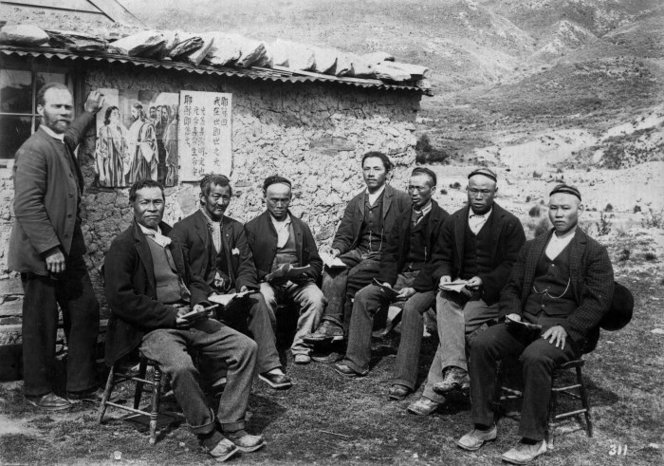
Chinese gold miners, with Mr Last in the middle, and Reverend Alexander Don on the far left, at the Kyeburn diggings circa 1900. Image courtesy of Te Puna Mātauranga o Aotearoa – National Library of New Zealand
Dunedin Chamber of Commerce
The Otago Goldfields attracted the first group of organised Chinese migrant workers. The Dunedin Chamber of Commerce (now the Otago Chamber of Commerce) recruited the workers when European miners left Otago to try their luck in the newly discovered West Coast goldfields. By late 1869, over 2,000 Chinese men had come to the land they would call the ‘New Gold Mountain.’
Many Chinese miners lived away from their European neighbours, without their families (who remained home in China) in extremely small, cramped and tiny cottages – no doubt a harsh existence during the freezing cold winters and scorching hot summers that Central Otago is renowned for. For more information on early Chinese migrants visit Te Ara – The Encyclopedia of New Zealand.
A fresh start
Immigration rules in New Zealand became more liberal in 1987, and new waves of Chinese migrants once again came to ‘New Gold Mountain,’ as their ancestors named New Zealand. Chinese migrants brought diverse skills and languages, and rich culture and traditions such as the lion dance and the lantern festival.
When the goldfields had been exhausted, many Chinese miners came to Dunedin to establish and run some of Otago’s early businesses. Their ancestors still call Dunedin home today.
A tale of two cities
In part due to the strong influence of Chinese in Otago’s history, the involvement of the local Chinese population and the wish to establish trusted business and trade opportunities Dunedin became sister city to Shanghai in October 1994.
The relationship is a driver behind Project Shanghai, a partnership of Dunedin businesses, educational institutions, the Otago Chamber of Commerce and the Dunedin City Council which aims to develop a broad range of links between the two cities.
A Dunedin Shanghai Association formed shortly after the relationship was formalised. The Association plays a key role in introducing and facilitating business, cultural, education and sports links between Dunedin groups and their Shanghai counterparts. It also hosts and facilitates a wide range of visitors and delegations from Shanghai. This role is reciprocated by the City of Shanghai in terms of visits to Shanghai by Dunedin delegations.
The Dunedin Chinese Garden
Once the sister city bonds had been formally recognised, talk began in 1998 of creating an authentic, traditional Chinese garden in Dunedin to recognise the contributions of the first Chinese people who came to Otago during the 1860’s and contributed so much both in commerce and culture over the years.
The Dunedin Chinese Garden’s design and construction was supervised and influenced by an architect from the Shanghai Construction and Decoration Company and the Shanghai Museum.
The Garden was pre-fabricated and assembled in Shanghai on a site identical in size and shape to that in Dunedin, then dismantled and transported here where it was reconstructed by artisans and supervisors from Shanghai.
The Dunedin Chinese Garden was blessed in June 2008, in the presence of Prime Minister Helen Clark and Chinese ambassador Zhang Yuanyuan and opened to the public on 8 June 2008. Prime Minister Clark returned to officially open the garden in September 2008.
Studying at the University of Otago
So, whilst the connections between China and Dunedin are historical and current, I am not Chinese – therefore I cannot give my perception on what it is like to live and study in Dunedin as a Chinese student at the University of Otago.
We caught up with Mike (Huang) Junjing who is here studying for a Bachelor of Physiotherapy (BPhty) to get his perspective as a Chinese student studying at the University of Otago and this video tells his story.
Take it away Mike…….
NB: The introduction is spoken in Chinese with Chinese subtitles, but the rest of the video is spoken in English with Chinese subtitles.
Nicky Richardson is an International Marketing Coordinator at the University of Otago. With degrees in music and marketing, she is a recent graduate of Otago herself – she loves Otago so much she ended up getting a job here!
5 things you might not know about the University of Otago….
As we rapidly approach 2019 and the University of Otago’s 150th birthday celebrations, it seems like a good opportunity to delve into the archives to find out some not so commonly known pieces of information about the university. I have asked around and here are 5 hidden gems that you might not know about the University of Otago.
Gargoyles or Grotesques?
Perched high above the Archway (which was once the formal entrance to the University) are a series of grotesques, each representing the various branches of learning available at the university at the time. They have been named gargoyles but the distinction lies between the fact that a gargoyle functions as a water spout to divert rain from the buildings, whereas a grotesque is purely decorative and involves either fanciful animal and human forms often distorted to be ugly and absurd.
Rumour has it that the grotesques were modelled on academic staff of the time……but that has never been confirmed. The man responsible for these unique little design elements was Edmund Anscombe (1874-1948), the university’s architect from around 1909 to 1929. While Fletcher Brothers won the tender to construct the Archway with a price of £10,292, the stonemason who carved the grotesques is unknown.
Otago’s oldest building
When you look at our gorgeous campus it is easy to assume that the oldest buildings are the old stone buildings in the centre of campus, but as the university expanded over time it began to acquire neighbouring properties which ranged from tiny cottages to larger homes.
Some were demolished, but some still survive, including what is widely deemed to hold the title of ‘oldest building on campus.’ Mellor House, one of the old Union Street houses which is now home to the Department of Psychology was originally built in 1862 for Thomas Calcutt, a printer who migrated from England to Otago in 1858.
Cry me a river……of tears
These beautiful black gates were originally the main entrance to the campus, as the entire campus was once contained within the ‘Quad’ which you can see immediately beyond the archway.
This stone corridor houses display boxes on the left which now contain information about events around the university, but their original purpose was for the public display of exam results. Hundreds would gather to view their results and many a tear was shed when the marks were not positive, hence the archway being coined ‘The Corridor of Tears’ or the ‘Tunnel of Tears.’
The archway links the Allen Hall building (completed 1914, it was originally the Students’ Union) to the former School of Mines building (completed 1909, which is currently home to the International Office and where I am writing this blog). The entire group of buildings was designed by Edmund Anscombe the architect for the majority of the University buildings from 1909 to 1927.
The original site of the Dunedin Botanic Gardens
The Water of Leith which runs through the university campus is not always this tranquil, and this was certainly the case when in February 1868 floods washed away bridges, and about an acre of gardens – at this point in history this site was home to the Dunedin Botanic Garden. This saw the Botanic Garden moved further north to their current site, and the university was able to purchase the land and develop it in the 1870’s. Some of the trees in front of the clocktower are indeed older than the buildings themselves as they are a reminder of the original inhabitants of this site.
Students have always pushed the boundaries
Each generation that passes seems to muse on the fact that the younger generations are less respectful, more verbal and opinionated and more willing to push the boundaries, but it appears that students, or indeed the younger generation have always held this inclination.
The image above was taken from the desktops of the oldest lecture theatres on campus – in both Geology and the clocktower. As you can see from the dates, some of this is very old indeed, with J.H. (John Harpur) Moir making his mark in 1886-1887. Mr Harpur graduated with a B.A in 1890 and became headmaster of Dunedin’s Normal School.
The full installation, complete with plaque now features on the south wall of the council chambers in the clocktower building, and it really is a remarkable and historical sight to see, some of the graffiti is embedded so deeply into the wood, it must have taken hours!
Nicky Richardson is an International Marketing Coordinator at the University of Otago. With degrees in music and marketing, she is a recent graduate of Otago herself – she loves Otago so much she ended up getting a job here!
Fit in, or stand out? A Muslim perspective on life at Otago University
How do students that choose to live their lives in the Muslim faith feel when they come to the University of Otago? Do they stand out from the crowd? Are their beliefs and practices respected and catered for? Well, that is a question I cannot answer as I am not a Muslim. But I have met Muslim students working here and I have an increasing interest in the way that they choose to lead their lives. Today we launch our international video taken from the perspective of a Muslim student studying at Otago – so, what is it like?
My day is just like yours
These quotes were taken from anonymous Muslim writers in an article titled ‘What is it like to be a Muslim Student at Otago University’ and published by Critic in August 2016:
“As a Muslim student at Otago, my day is just like yours. This is because not all Muslims come in the same packaging. There are over a billion of us worldwide and each is an individual. Islam is the religion I was born into and have grown up with. For me, it is not something I consciously think about but the values that come with being Muslim are now so deeply ingrained within my identity that they are second nature. It is something I carry with me in my interaction with other students, with the University itself and the general public.”
Diverse staff and students
I think that the point made that “not all Muslims come in the same packaging” is something we non-Muslims need to remember. Don’t judge a book by its cover, and especially don’t judge a way of life that you have no understanding of. Reading through the articles written and the conversations had, it is clear that Muslim students predominantly feel welcomed and accepted.
“If anything, I’m overwhelmed with how accepting and open-minded all of the staff and students are here. One of the first things that I noticed when I moved here was how diverse the student body appeared to be and how nobody seemed to care about what anyone else was doing. This is one of my favourite things about this place.”
No barriers to practising beliefs
The University has two prayer rooms with one space exclusively for the Islamic community; it faces Mecca and is split into two rooms by a curtain. This is to adhere to Islamic rules on prayer with the opposite gender. Halal Food is readily available in local supermarkets and there are Halal restaurants in Dunedin. And if you’re wondering about connecting with other Muslim students when you come to Otago there is a range of established groups like the OMSA (Otago Malaysian Students’ Association), the Otago Muslim Association, and the MUSA (University of Otago Muslim University Students’ Association).
Studying at Otago – a Muslim Perspective
As for the question ‘fit in, or stand out?’ I think you’ll find that at Otago the choice is yours…..Muslim, or not.
But once again, as eluded to in the beginning of this blog post, I am not a Muslim, so therefore I cannot tell you what life as a Muslim at Otago is like.
But this lovely, smart and inspiring young woman – Arina Aizal can, and she does so, so beautifully in our latest video……….take it away Arina……..
Nicky Richardson is an International Marketing Coordinator at the University of Otago. With degrees in music and marketing, she is a recent graduate of Otago herself – she loves Otago so much she ended up getting a job here!
5 reasons why studying in NZ is a smart choice!
On a previous blog this month we discussed the 5 main reasons we believe Dunedin is an awesome place to be, but now we’re looking a little bit wider and we want to talk about our top 5 reasons that make New Zealand a great place to study and get qualified!
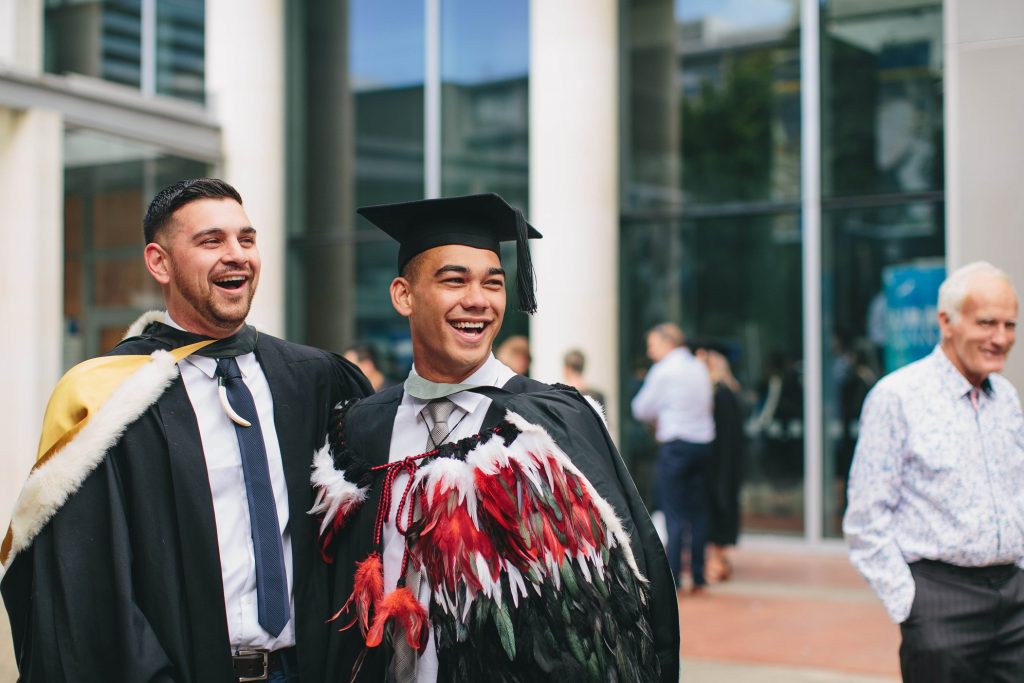
An Otago degree opens doors around the world, and graduation day is a day that Otago likes to celebrate.
When you choose New Zealand as your study destination you’re making a smart choice because you will receive a world-class education, and don’t just take our word for it! All eight of New Zealand’s universities including the University of Otago are in the top 3% in the world. Something that sets us apart here at Otago is the personalised and practical approach to learning and teaching. Students get hands on experience from research led teaching so the information they are receiving is the very latest, studying at Otago means you are always on the edge of what is known and what is being discovered. The other major point to make is that New Zealand university qualifications are recognised and respected globally meaning it can open career pathways and doors for you around the world.
New Zealand is insanely beautiful. Like, yes……RIDICULOUS…. The Lord of the Rings was filmed here. Need I say more. Of course, we still have some larger cities that aren’t quite as pristine, but you needn’t travel far geographically in New Zealand to find yourself in a picture book paradise. And alongside this, is the opportunity to get into the outdoors and experience a lifestyle that is truly freedom. And we aren’t all just paddocks and flocks of sheep, yes, you will definitely find that here, but we have become a lot more sophisticated over the last decade or so and developed our own unique New Zealand sense of café culture, art, food and fashion.
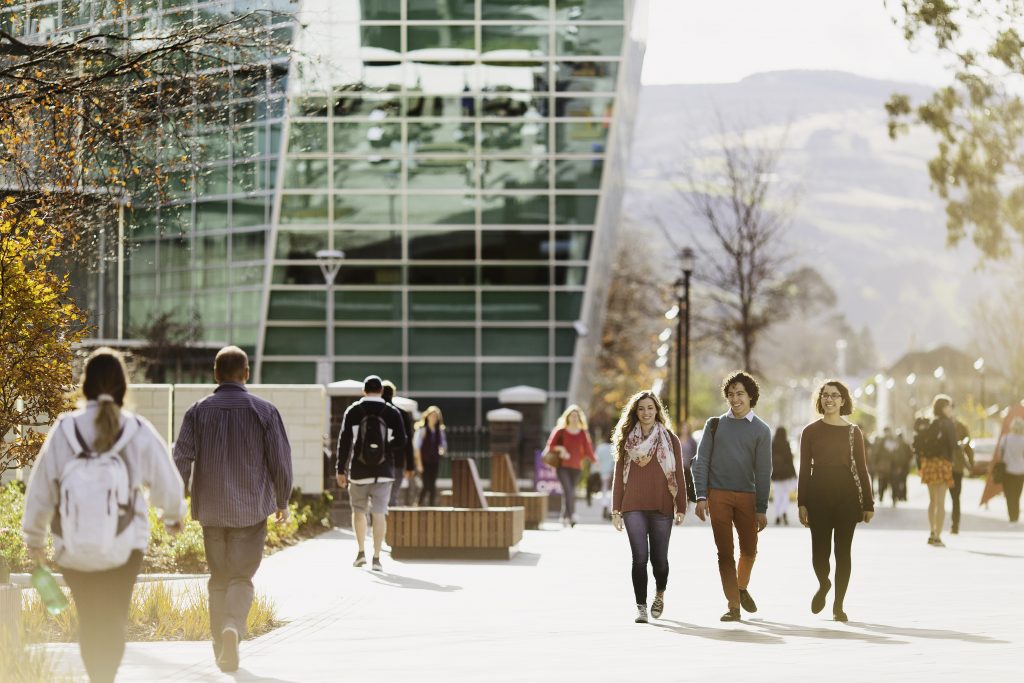
Students feel safe, with a sense of personal freedom as they walk around the Otago University campus.
We have always been a very safe country. In fact, we are the world’s second most peaceful country (Global Peace Index, 2017). And the concept of safety if you are a born and bred New Zealander is just something that we have taken for granted. We are used to feeling safe, and up until the digital age we were probably somewhat blissfully ignorant that many parts of the world are going through, and have been living in turmoil through war and unrest. So the decision to bring yourself to the other side of the world means you want to know that you are not coming into danger.
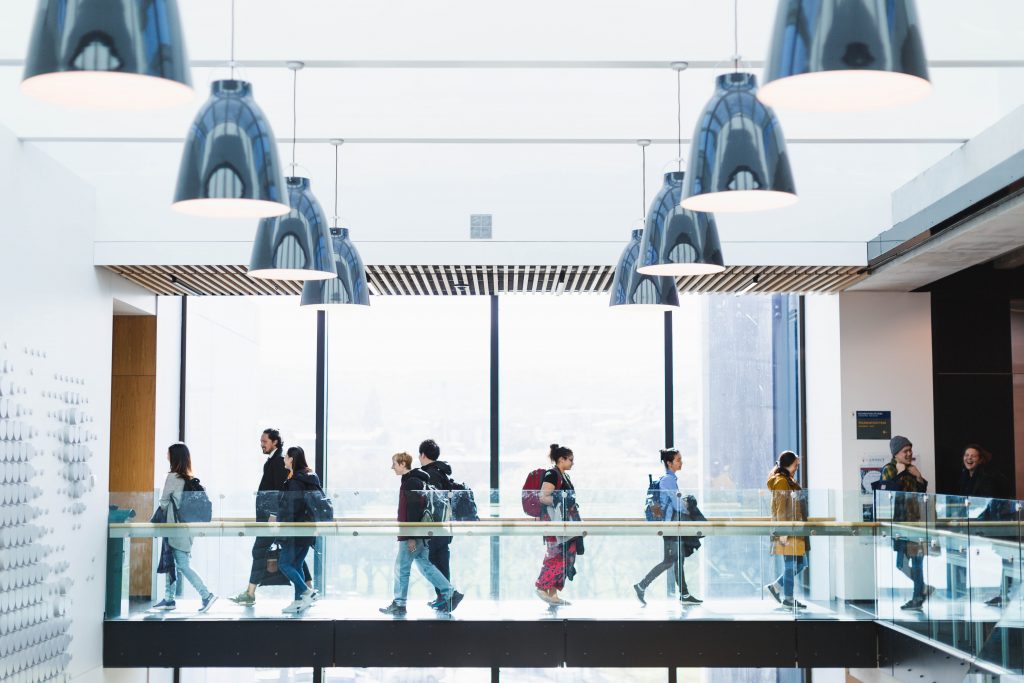
Lower cost of living and a perception that you are getting good value for money is a recurrent theme amongst international students.
Money! Having interviewed countless international students on their motivations to come and study at Otago University, it is clear for many that money and perceived value for money is a very important part of the decision making process. The international student recruitment market is a highly competitive one, and when it comes to cost New Zealand has lower living costs than many other countries. Also if you are a PhD student thinking of coming to study in New Zealand you will pay the same amount of fees as a domestic New Zealand student. Plus, if you choose to study in New Zealand there are opportunities for you to not only study, but work part-time as well.
We are generally a friendly bunch of people. Well, certainly down here in the South Island (Te Waipounamu). If you’re an international student it may seem strange that we say hello, Kia ora, smile or generally engage when we are out and about on campus, but that’s just what we do here. International students are always surprised by this friendliness, and once they feel confident enough to start saying ‘Kia ora’ which roughly translates to ‘good health to you’ in Māori, one of our three official languages, smile and start engaging, life will definitely start opening up. If you’re thinking about studying overseas consider these factors and get in touch if you’d like to know more.
Nicky Richardson is an International Marketing Coordinator at the University of Otago. With degrees in music and marketing, she is a recent graduate of Otago herself – she loves Otago so much she ended up getting a job here!
A Quest for Change – One Student’s Journey to Otago
Kia whakatōmuri te haere whakamua
My past is my present is my future
“My name is Miranda Livers, but my name is Saw Saw. I am Cherokee.”
Miranda Livers knew very little of her heritage. She was never taught her native tongue, or the ways of her ancestors, she was never passed down the knowledge of the stories of her people. All Miranda Livers knew growing up as a young girl was that being native was censored, judged, stereotyped and policed. But Miranda was not prepared to accept this, and set her sights on change.
“A quest is defined as a long and arduous search for something, and my quest began – I was going to learn as much as I could about who I am. I learned that Native peoples are the largest group in the U.S. that has the highest poverty rates. Our drug and alcohol addiction rates are also highest in the nation. I learned that so many people believe Native Americans are all dead. When my high school graduation finally arrived, I graduated with a 4.0 grade point average in my last year and the knowledge I had beat the odds. Native students have one of the lowest graduation rates. I had ‘made it.’”
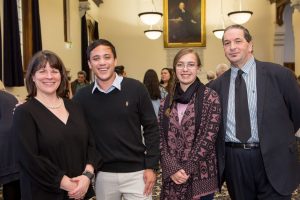
(L-R) Vice-Chancellor Professor Harlene Hayne, outgoing student Barlow Anderson, inbound student Miranda Livers and Office of Māori Development Director Tuari Potiki.
Miranda Livers is the very first inbound student of the unique exchange programme Turangawaewae Pokai Whenua which translates to “a place to stand, a world to explore.” This exchange is built on kanohi-ki-te-kanohi (face-to-face) relationships established between mana whenua and indigenous representatives of universities throughout the world.
“This programme is designed to integrate a native/indigenous student from another country into the Maori culture, while that student simultaneously teaches those involved about their own culture. It is a fantastic programme in its first year, but in the years to come it may help in keeping other cultures alive.”
Why did Miranda choose Otago over other universities in New Zealand and the rest of the world? “It was the only one that offered me an indigenous experience while abroad and I couldn’t be happier with Otago. Otago has exceeded my expectations. I knew that if I wanted to fully reconnect with my culture, then I needed this programme to give me that support and motivation. In other words, it was the push I needed.”
Tūrangawaewae, Pōkai Whenua
A place to stand, A world to explore

